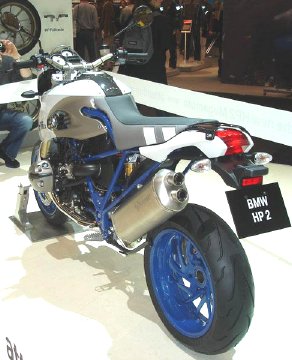Now playing:
BRYAN ADAMS
- RECKLESS -
looping track 6:
- Summer of '69


Daily cartoons from the right side of the political spectrum !

Wahooo!
Another
GPZ-550 in my sites!
 Turn 1 - Willow
Turn 1 - Willow
All material
on this site
Copyright
Mike.
No use without permission.

I HATE racing in the rain. Oh well....
...'least I won.

Looove those front brakes!
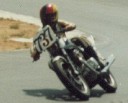
Turn 6
Riverside

HEY!
Lean off YOUR bike, not mine!
Turn 1
Willow Springs

Later, dude!
See ya in the pits!
Turn 6
Willow Springs

Dragging ALL
the hardware!
Turn 2
Willow Springs

Wahoo!
The dog-leg at S.I.R.
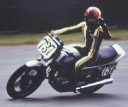
Hi Dad!
turn 2 at S.I.R.
|
You're Not Even Just a Little Bit Curious?
Posted February 29, 2012 by Mike
 Some idiots want to recreate a prehistoric man from DNA they've found, because, well, they can. And it would be "interesting".
Some idiots want to recreate a prehistoric man from DNA they've found, because, well, they can. And it would be "interesting".
So - let me get this straight. We’ve got the ability to re-create living things, even people, now, from DNA.
We’ve got ultra-sophisticated computer reconstruction software that will allow us to see what someone looked like based on their bone structure.
We have the remains of the twin sister* - let me repeat that - the TWIN SISTER, mind you, of the most beautiful women on earth, in all of recorded history, the women with the face that launched a thousand ships, Helen of Troy, and y’all aren’t even just a little bit curious what she looked like?
. . . yeah, I know - kinda like asking a shepherd to give a golden apple inscribed with “For the Fairest” to the most beautiful Goddess in the Pantheon. What could possibly go wrong . . .
* Clytaemnestra, Agamemnon's wife, was Helen of Troy's twin sister. Makes sense, doesn't it? Agamemnon, King of Mycenae, and his brother Menelaus, King of Sparta, and husband of Helen, the two most powerful Kings in Greece, were married to beautiful twin sisters.
|
|

God Speed, Marco.
Marco Simoncelli
1987-2011
Posted October 24, 2011
|
|
The Plastic Ducati MotoGP bike
. . . or:
Non-homogeneous Materials, Fatigue Life, and Part Failure
Posted June 26, 2011 by Mike
Scenario 1
In 1931, famous aviator Jimmy Doolittle was flying a Laird Super Solution, one of the fastest airplanes in the air, at the Cleveland Air Races. Like many other race planes of it’s time, it was a wood and fabric biplane with a very large engine. Internally stressed cantilever wings had not yet become the rule, so like most other biplanes of the day, it relied on flying wires to maintain the wing incidence and position relative to the rest of the aircraft. The wings were attached to the fuselage with steel bolts, which passed through reinforced sections of the wing’s spars, and attached to steel fittings on the fuselage. Unfortunately, due to a design deficiency, the main wing truss was incomplete, and the auxiliary wing truss depended on a single fitting at the center of the upper wing rear spar. The spar was crushed at this point, so every time the aircraft flew, the rigging would loosen, resulting in control reversal at top speed, and threatening the structural integrity of the aircraft. A vicious circle ensued, where the rear wing spar was tightened, the rigging adjusted, then the flying loads would loosen the crushed spar attach point, and the rigging would loosen in flight, resulting in dangerous and unpredictable flight characteristics. Only a properly designed wing truss and a new spar would solve the problem.
Scenario 2
In the early 1980’s, a well-known (at the time) helmet manufacturer decided to introduce a motorcycle helmet that employed Kevlar, which at the time was a new miracle material. The thought was that Kevlar was so much stronger than fiberglass that it would provide much better protection. We know a lot more about composite material use in helmets now, but at the time, this seemed like a reasonable assumption. The helmet, which passed the rigorous Snell standards of the day, was released with the usual fanfare, and was adopted by several club-racers. Shortly after, a disturbing trend developed. Several racers crashed while using the new helmet, and an unusually high percentage of them wound up with concussions, which it was felt would not have happened had they been wearing another popular helmet of the day.
After several incidents of this type, one of the affected riders took the initiative, and had his helmet X-rayed. The result was shocking. While the helmet appeared completely normal from the outside (with the exception of the expected scuff or two courtesy of the crash), the X-ray showed a very different picture. In fact, the entire helmet shell had shattered. More specifically, the resin component of the composite had shattered, making the helmet useless. The helmet was returned to the manufacturer with the results of the X-ray, and an investigation ensued. The investigation had two significant findings.
First, and worst, was that the resin in the shell was several times more brittle and much more easily shattered than the resin in similar helmets that had been subjected to the Snell helmet testing procedures. When the helmets were originally tested, new helmets fresh off the assembly line were used. Helmets pulled off dealer shelves and tested after the fact were uniformly found to have the same brittle resin defect. The problem turned out to be that the particular resin used for these helmets had an abnormally long cure time. The resin in helmet shells fresh off the assembly line was still “soft” and pliable enough to withstand and pass Snell’s multiple impact test. After the resin had time to fully cure, it became so brittle it would shatter on the first impact, leaving the riders head almost completely unprotected from subsequent impacts.
The second finding was that there was too much Kevlar in the shell. Even if the resin did not shatter, the helmet shell acted like a steel helmet, transferring all the load of impact directly to the rider’s head at the point of impact, instead of deforming the way a fiberglass shell would, and allowing the impact to be distributed over a wider area. Much design work and research was done to solve these problems, but that particular helmet design never recovered from the bad press amongst the racers.
Scenario 3
In the 1980’s, it was the practice among certain race car classes to throw a vehicle frame away after a season of use, and if the team was sufficiently flush with cash, after every crash, or six months of use, whichever came first. The reason for this practice was that the frames had exceeded their fatigue life, and were too flexible to be of use, or were either bent from racing load stresses, or bent from crash impacts. The fatigue life of a part is the number of times you can take it to it’s load limit before it fails, and you want to avoid reaching this point, which is why the frames would get junked after a period of time.
Scenario 4
It was rumored that when Freddie Spencer rode his Honda Superbike at Laguna Seca, they had to replace the steel handlebar every time he came in because he had bent it trying to force the bike to do what he wanted it to do.
The Main Theme
So why do I mention a 1930’s race plane, a 1980’s motorcycle helmet, steel race-car frames, and old-style steel motorcycle handlebars in an article about a 2011 MotoGP race bike with a frame made of composite materials?
Three reasons. First, wood, used in the race plane, is the original plastic material, and has many of the same design and maintenance problems as modern-day plastic materials such as the composites used in the current Ducati MotoGP bike. Wood, like modern composite materials, is a non-homogeneous material. As the strength of a wood part depends on it's grain direction, so too does the strength of a composite part depend on the direction of the fibers in it's lay-up. In many respects, composites are very similar to wood in both their material properties and the design techniques required to produce a successful design.
Second, steel is a homogeneous material that has been used to make many parts on motorcycles, and is a predictable if old-fashioned material. All it’s material properties are well-known, and designing with steel is a relatively simple process because of it. Aluminum, like steel, is also a well-known and homogenous material, and the design process for aluminum parts is as straight-forward as steel.
Third, steel and aluminum are predictable and testing can be used to reliably predict performance of a part. Test one part to failure, and odds are extremely good that every single identical part will fail in exactly the same way, at what is, for all practical purposes, an identical load.
Composites on the other hand, by definition, are not homogeneous, either in material type, properties, or directional strength. Because composite parts are not homogeneous, they are neither as predictable, nor as easily tested, as single-material parts made from predictable materials like steel or aluminum. In fact, due to the vagaries of the composite part production process, it is difficult to say with certainty if two identical parts will have even remotely the same physical properties without testing them first.
Unfortunately, there is no easy way to do this. In fact, special testing, called Non-Destructive Testing should be done on critical parts before they are used to ensure they will perform as desired. In the past, this has required that many ultra-sounds of the part be taken at every level of the part to make sure no voids (air pockets) have occurred in the fabrication process. If a void is found, the part is junk. This type of testing is time-consuming, tedious, expensive, and there is still no guarantee of the part’s integrity when finished, because it is so easy to miss a void.
Ducati's Composite Frame Parts
With this background, we can now start to talk about Ducatis’ carbon-fiber composite frame parts. The difficulties the riders have voiced include unpredictable results, and a too-stiff frame front-end. With a ‘normal’ aluminum or steel frame, flexibility can be designed into the system. A part can be designed, built, and tested for all it’s desired properties in every direction and one can be assured that identical parts will all have the same properties. This is very useful if a part is damaged and the part must be replaced. It is also important because the fatigue life of steel and aluminum parts is well-understood, and can be calculated and designed to.
Theoretically, this can also be done with a composite frame part. However, the non-homogeneous material properties of composites make this very difficult. If a very stiff frame was all you needed to achieve, one would simply design a frame part that was stiff enough with a large margin of safety, and you would never have to worry about the crush-strength of the material, possible impact loads from a crash, or most importantly, the fatigue life of the part.
Unfortunately, too stiff a part results in a less than optimum amount of rider feedback, and as we have seen, many crashes. The trick is to engineer flexibility into the part without risking failure, and there-in lies the problem. Make the part sufficiently flexible, and the ultra-stiff and VERY brittle fibers in the part become subject to bending, which they cannot do without breaking. Flex the part enough, and break enough of those fibers, and the part is no longer structurally sound. Its fatigue life has been exceeded, and it is no longer functional.
Also, if a part is sufficiently flexible, a crash may damage the material internally without any external tell-tales signs.
The difficulty with composite parts is that unless a composite part has visibly failed, you cannot tell by looking at it whether the fatigue life has been exceeded or the part has been weakened by a crash. The internal fibers, or resin, or both, might be broken or crushed, like the spar on the biplane racer, and no one would be the wiser. The only sign that something is wrong is that the bike’s handling becomes unpredictable due to the front end moving about in directions it did not previously move. The question becomes, how does one know when the part should be replaced? The follow-up questions are equally important. Is the replacement part identical to the part being replaced? How do you know? Has it been tested?
Answers to these questions can only be obtained through extensive testing. Multiple parts must be built with varying degrees of flexibility, and a test program instituted that results in reproducibility of results. Every part must first be non-destructively tested for voids and other imperfections to provide a reliable basis for comparison. Parts of different stiffness must then be tested by the riders to determine which one provides the best feedback. Many identical copies of the design with the best feedback must then be non-destructively tested first to determine their viability, and then extensively tested to both strength failure and part destruction (not necessarily the same) to determine their actual fatigue life and material properties. Only then will bike handling with composite parts become predictable enough for the riders to be regularly competitive.
It may turn out that a composite part that is flexible enough to provide proper feedback has the fatigue life of a set of MotoGP roadracing qualifying slicks - good for only 1.5 laps before turning to junk, and like Freddie Spencer’s Superbike handlebars, needs to be swapped out after every track out, or it may turn out that accidents aside, the part may be good for a half season, like the old steel tube race car frames. Either way, until complete and rigorous testing is done, the actual fatigue life of a composite part will not be known for a certainty. Until then, it is possible, that like the composite helmets mentioned above in Scenario 3, the composite parts being used on the Ducati MotoGP bike have actually failed without visible proof, and the only indicators are unpredictable responses to physical inputs.
|
|
The Tribulations of Toni Elias
. . . or - What Happened to All The Little Guys in MotoGP?
Posted March 31, 2011 by Mike
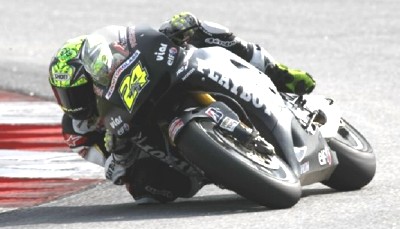
When Toni Elias was demoted to the new Moto2 class after several poor seasons in MotoGP’s top class, no one really expected him to return, but after winning the very first Moto2 Championship in such convincing fashion, he had to be restored to the premier class in order to legitimize the Moto2 class as the 250 GP class replacement, and the new stepping stone to the premier class. Some thought that with a championship under his belt, restored confidence, and new incentive to do well, he would return to his old exciting self. This did not happen, and it appears that Toni is stuck at the back of the grid, fulfilling the nay-sayers opinions that he just wasn’t good enough, and that it just showed that MotoGP riders really were that much better than Moto2 riders, and why couldn’t they have given (fill in the blank here for their favorite rider) a chance instead of Toni, who’s already had his chance in the premier class.
Honda has publicly said they know Toni has the talent, and they are trying diligently to make it possible for that talent to come forth, so much so that they have made a special frame for him to help him out. Unfortunately, so far, it does not appear to be working.
So why, as Toni has so elegantly demonstrated, can he win so easily in Moto2 on 600s, and be such a dismal failure in MotoGP now, as opposed to when he was capable of beating even Valentino Rossi, on a satellite bike no less, as recently as 2006?
Current scuttlebutt is that Toni’s unique style of hanging off the bike doesn’t allow him to get enough heat into the tires to get them up to temperature. The different styles of riding large displacement bikes currently fall into two camps – the old Superbike style of accelerate, stop in the middle of the corner, and accelerate out again, popularly known as “point and shoot”, and the “250 GP style”, that of maintaining the highest possible corner speed, which with the advent of the 800cc class is what competitive riders are using. If Toni was using the old Superbike point and shoot style, criticism of his style would be a legitimate concern, but Toni is a classically trained 250 GP pilot, and high corner speeds are his style.
The way Toni hangs off his race bike has attracted negative attention simply because it is noticeably and visually different, but it has been criticized without regard to why he might have had to develop it.
I submit that Toni’s unique style of hanging off is not an affectation he has adopted for amusement, but a direct result of the limitations imposed by his small size and weight, the laws of physics as they relate to tire adhesion, and how the physical characteristics of the tires influence the relation between the two.
To show how Toni has been forced into his “unique style”, we must first understand the basic physics of how a motorcycle tire works. At its most basic level, there are two components to tire adhesion. The first is the “stickiness” of the tire, and the second is the size of the contact patch.
Let’s look first at tire “stickiness”, which is governed by the physics between the tire and the pavement. The equation for how well a motorcycle tire sticks is quite simple. The Force acting on the tire is simply the Normal Force times the Coefficient of Friction, written like this:
F = f x N
or:
Force on the tire =
(Coefficient of friction) x (Normal Force)
where the Coefficient of Friction is a unique variable describing how well a particular compound tire sticks to the pavement, and the Normal Force is the force acting in the vertical direction on the tire.
While the nominal Coefficient of Friction (nominal because different pavement surfaces also have their own unique value of “stickiness”) of any given tire is probably a closely guarded corporate secret, we don’t really have to worry about it, beyond saying that some tires have a higher coefficient of friction, or are “stickier” than others. In any event, we will be treating it as a constant for now. The other factor, the Normal Force, is easily determined. The equation for the Normal Force is:
F = MA
or;
(Normal) Force = Mass x Acceleration
In the case of a motorcycle, the Mass is the mass of the rider plus the mass of the motorcycle, and the Acceleration is the acceleration due to gravity. Reduced to the lowest form, the Mass times the Acceleration is simply the Weight.
The forces acting on the tire are best shown using a force vector diagram, and for our purposes we’ll show what it looks like as the motorcycle is going around a corner. Here’s the basic diagram, and we’ll start by assuming that this is for a “heavy” rider:
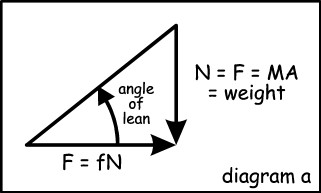
Remember, this diagram is for a “heavy” rider. Now let’s see what happens when we have a small rider who weighs quite a bit less. Assuming that we have the same coefficient of friction (the same tire/pavement combination) as in the first case, but a smaller rider weight (or Normal Force), we find that in order to achieve the same force on the tire, F = fN (the same length horizontal arrow on the diagram), the angle of lean must be greater. Here’s what the force diagram for the same bike/tire/pavement combination looks like compared to the first one if we just reduce the rider weight:

Notice that the required angle of lean for the lighter rider to achieve the same frictional force on the tire has increased considerably.
Unfortunately, the incredible angles of lean that can be achieved by the modern Bridgestone MotoGP slicks make it more difficult for Toni in two respects. First, the other riders are also leaning over a lot, so to achieve the same frictional force, Toni must lean over further still. This means that if the other riders are on the edge of the tires, Toni must ride off the edge of the tires to achieve his required greater lean angle.
In order to ride around this problem, Toni borrows an old technique from production bike racing, that of hanging one’s body as far off the bike as possible in order to increase the bike’s physical cornering clearance. This moves the combined Center of Gravity to the inside of the turn, allowing increased corner speed with less lean angle, and helping to prevent hard bits on the bike’s undercarriage from dragging and levering the bike and rider into the scenery.
In Toni’s case, it allows the greater angle of lean he needs to achieve the same frictional force as the heavier rider, and remain on the sticky part of the tire instead of sliding off on his rear.
Unfortunately, because of the stupendous lean angles achieved by the modern MotoGP bikes, there isn’t much space between the bike and the ground for Toni to hang off as far as he needs to. To minimize this problem, Toni has adapted his required hanging off style by moving his entire torso off the side of the bike, but keeping it as close to the side of the bike as possible.
Let’s assume that Toni has managed to solve the problem of his weight-limited coefficient of friction force, and has achieved the same coefficient of friction force and the same angle of lean as the heavier rider by hanging off the bike as described above.
Unfortunately, Toni’s adaptation to the problem of lack of friction force imposed by his small weight doesn’t help him with the second component of tire adhesion and traction, which is the size of the contact patch.
That’s the other problem Toni faces – using the same tire as the heavier rider, his weight simply cannot deflect the tire enough to achieve the same size contact patch, and without the equivalent “rubber on the road”, he won’t get as much grip, (traction), and in addition, he will not be able to get enough heat into the tire to make it work. Less weight equals less force equals less energy (heat) imparted to the tire.

Note the smaller contact patch for the lighter rider in the diagram above.
So how was it that Toni (and other small riders like Loris and Marco) was able to win races just a few short years ago, and now he is relegated to the back of the grid?
Simply put, it’s the difference between the tires used then, and the tires used now. When Michelin was providing tires to the MotoGP paddock, there was a wider range of tires available that were different in both compound AND stiffness. A lighter rider would want to choose a slightly stickier compound tire to achieve the same friction force without resorting to the kind of acrobatics on the bike Toni has had to resort to, but would also want a tire with a significantly more flexible carcass so that it would deform more allowing the lighter rider to have more or less the same size contact patch as the heavier riders. As with all such choices, there is a downside. Choose a softer tire, and lighter weight rider or no, tire life is lessened.
In any event, Toni, Loris, and Marco had a much better choice of tires while Michelin was in the paddock than they do now, and those tires were MUCH less stiff than the hard carcass Bridgestones currently available to the MotoGP paddock. Had not Casey Stoner arrived on the scene in 2007 in such spectacular fashion, Michelin might still be producing tires for MotoGP riders, and the smaller riders might still win the occasional race, but arrive he did, and he brought with him a unique background – 43 national flat (dirt) track titles before the age of 14. In short, Casey was used to diving into the first turn on hard tires and a slippery surface, and he used this background to devastating effect on the stiff Ducati with its hard carcass Bridgestone tires. Casey dominated so thoroughly, that after Rossi, the most popular and influential rider in the paddock, failed to finish at the front on multiple occasions, and not finish at all on at least one occasion due to tire trouble, matters came to a head. No longer was Rossi able to start slow, save his tires by slowly working his way through the field, and be assured a place on the podium. Now he had to ride flat out from the word “go”, and in doing so, he frequently used up his tires before the end of the race. Something had to be done, as this was not to be tolerated. MotoGP was not about to stand around with their collective hands in their pockets while their star attraction finished mid-pack, so the way was smoothed for Rossi to make the switch from Michelins to Bridgestones. Rossi’s very public switch from Michelin to Bridgestone tires sent shockwaves through the paddock, precipitating several other riders’ move over to the Bridgestone camp. Michelin might have been having problems, but to be so publicly and unceremoniously dumped by MotoGP’s most popular rider was a dark mark on their reputation, and then to have that followed up by having several other well-known riders switch after the end of the season was the final nail, and lead to their exit from the MotoGP paddock.
Michelin’s exit from MotoGP was a disaster for the smaller riders in the paddock, as the Bridgestones, with their much stiffer carcass design were unable to provide the carcass flexibility and it’s resulting larger contact patch needed by the smaller riders to make up for their lack of weight. To make matters worse, the tires were also designed to be much harder to allow the heavier riders (read Valentino Rossi) to go the full race distance without losing grip. The harder tires were exactly the opposite of what the lighter riders needed to stay competitive, namely a softer compound, AND a more flexible carcass. Small wonder that as a general group, they now populate the back of the grid.
Availability of a softer tire with respect to both the compound and the carcass stiffness also explains Toni’s immediate competitiveness in the 600cc Moto2 class. Moto2 bikes make significantly less horsepower, and so do not require the very stiff carcass tires the MotoGP bikes need. The lack of horsepower also allows a softer compound tire that will still go race distance than could be used on larger bikes with more horsepower. With both a more flexible carcass and stickier tire, it’s small wonder that smaller riders do better in the Moto2 class.
But what about Dani Pedrosa you ask? Why, if all the other small riders are having such a hard time, is Dani doing relatively, if somewhat inconsistently, well? He’s as small as the smallest of them, and he’s still winning. I suspect the answer lies in Dani’s superlative level of skill. Like Casey having to ride at the very limits of the Ducati to win races, so too does Dani have to ride consistently at or over the edge of the capability of the tires to perform for a rider of his small size and weight. It is a tribute to his amazing skill that he is able to do it as long as he can during a race. In spite of being already numbered among the aliens, Dani may just be the most under-rated rider of the lot for his accomplishments, maybe even more so than Casey was for his. What people attribute to Dani as inconsistency in results is most likely his inability to ride the perfect race every single time. With the lower grip levels he can attain due to his lighter weight, he cannot make even the slightest mistake without suffering severe consequences. No rider can, as Casey has shown. But make no mistake, Dani is an alien, and when he is on, he is ON. If Dani had optimum tires for his weight, it is likely we would see him on the podium every single race, and his results would better reflect his achievements in the 250 class.
So, we come to the most important question regarding Toni’s future in MotoGP, and for that matter, all the other small riders as well. What would it take to make Toni (and Loris and Marco) competitive again in the Premier Class?
The answer is, of course, a tire that works for their weight class, namely, one that has a soft enough compound to make up for the lack of frictional force, and a flexible enough carcass to provide the needed larger contact patch. This tire option might require an increase in the number of tires allocated for a race weekend due to it’s shorter life, but as things are now, ALL the riders could use more tires over the course of the weekend, if for no other reason than to give them enough tires to properly set the bikes up so they are all more competitive.
Casey Stoner has already made comments about the class needing a softer tire that “Might not necessarily go race distance”, and judging from his predilection to almost always go for the hardest tire available, I suspect he wasn’t mentioning it for himself, but possibly acknowledging what the lighter riders need, and was voicing that concern.
Sadly, whether a completely different tire construction suitable for the smaller riders will happen or not probably depends entirely on MotoGP’s desire to make it happen, and since none of the small rider’s names are Valentino Rossi, it probably won’t.
The pendulum seems to have swung all the way to the heavy end of the rider spectrum without regard to the smaller riders. The bigotry of some fans aside, and their desire to rid the sport of the “midgets”, having tires that consistently work only for the heavier riders lessens the spectacle considerably. Having just a single tire supplier to the paddock makes it worse, as it would be difficult for Bridgestone to stretch their limited time and resources to create two classes of tires. The incentive to create a new tire construction also does not exist, as all the most popular riders (Dani being the one notable exception) currently tend to run to the larger end of the rider spectrum. Like Ducati’s attitude when Casey was winning races for them, “Why fix something that doesn’t appear to be broken?”
Barring a proper tire for lighter riders, the only other solution would be to add sufficient weight to the bike to get the bike/rider combination into the working range of the tire, although the concept of adding 40 pounds or so to the current finely-balanced MotoGP race bikes in a location that won’t make them viciously dangerous isn’t just antithetical to the whole concept of motorcycle racing, it’s also physically impossible to find a place to put the weight in such dense packages as modern MotoGP bikes have become, or in such a way that it wouldn’t break the frame under race-induced stresses.
Still, there is hope. With all the fan emphasis on wanting competitive and close racing, the (relatively) simple step of finding a way to reintroduce more tire variety to the paddock that is suitable to a wider range of riders could be the solution to the closer racing that everyone says they want.
(Everybody except me. When I was racing, I didn’t want any of those other yahoos anywhere near me. I wanted to finish so far in front that by the time the other guys in the class crossed the finish line, I’d already have gotten back to the pits and had time for the proverbial two brolly girls and a smoke, or to put it in the vernacular of the day, a pit woofie, a burger, a root beer, and fries).
|
|
Global Warmening - The Scam We Always Knew it Was
. . . "Hide the Decline!" - the rallying cry of enviro-socialist nutjobs the world over.
Posted November 29, 2009 by Mike
On November 19, 2009, the University of East Anglia Climatic Research Unit's servers were hacked, and 1079 e-mails and 72 documents (72 files and folders, containing 3485 documents, not counting the e-mails!) were downloaded to an anonymous Russian FTP server, and then links to this data found their way to multiple web-sites on the internet. The East Anglia University Climate Research Unit's Global Warming computer models served as the basis for reports by the United Nation's Intergovernmental Panel on Climate Change (IPCC). The hacked e-mails and documents showed a pattern of fraud, deceit, intimidation, corruption, collusion, and conspiracy amongst the "Global Warmening" mafia at East Anglia University's Climate Research Unit and their fellow travellers at other universities around the world in their efforts to promote the SCAM now known as Anthropogenic (man-caused) Global Warming.
Inconvenient temperature data facts like the Medievil Warm Period and the Little Ice Age had to be glossed over to create the now infamous "Hockey Stick" graph. From comments in this post comes an excellent short summary of the what, why, and how of how this was achieved.
"The elimination of the Medieval Warm Period and the Little Ice Age (the handle of the hockey stick) was necessary so that past solar effects could be minimized, thereby allowing almost all of the warming in the last 75 years to be blamed on Greenhouse Gasses. Raw data (like tree-ring thickness, radioisotope of mud layers in a lake bottom, ice core analyses, etc.) are used as a proxy for reconstruction of the temperature record for 1000 AD to 1960 AD. To ensure desired results, statistical manipulation of the raw data and selecting only supporting data, cherry-picking, was suspected and later proved."
An extensive summary of their corrupt dealings and communications can be found at
this link here.
Also, from Andrew Bolt's Post Warmist conspiracy exposed?:
"So the 1079 emails and 72 documents seem indeed evidence of a scandal involving most of the most prominent scientists pushing the man-made warming theory - a scandal that is one of the greatest in modern science. I’ve been adding some of the most astonishing in updates below - emails suggesting conspiracy, collusion in exaggerating warming data, possibly illegal destruction of embarrassing information, organised resistance to disclosure, manipulation of data, private admissions of flaws in their public claims and much more. "
Andrew has managed to extract some stunning quotes from those e-mails that demonstrate the depth of the Global Warming terrorists' depravity.
Historic data doesn't prove our point, let's change the data:
". . . I’ve just completed Mike’s Nature trick of adding in the real temps to each series for the last 20 years (ie from 1981 onwards) amd from 1961 for Keith’s to hide the decline [in temperature]." (emphasis mine)
Current temperatures don't match our model - current temperatures must wrong - right?:
". . . The fact is that we can’t account for the lack of warming at the moment and it is a travesty that we can’t. The CERES data published in the August BAMS 09 supplement on 2008 shows there should be even more warming: but the data are surely wrong. Our observing system is inadequate." (emphasis mine)
Iiiieeeeeeeee!!! - we're about to get caught! Quick! delete the evidence!
"Mike,
Can you delete any emails you may have had with Keith re AR4?
(**)
Keith will do likewise. He’s not in at the moment – minor family crisis.
Can you also email Gene and get him to do the same? I don’t have his new email address. We will be getting Caspar to do likewise."
(emphasis mine)
** - AR4 is the Fourth Assessment Report of the United Nation's Intergovernmental Panel on Climate Change (IPCC))
It's not just a few bad apples at the CRU though. This scandal reaches right to the top of the current U.S. administration. Via this article posted at the Wall Street Journal;
"Investigators are focusing on the correspondence of White House Science Adviser John Holdren, he said. Dr. Holdren, a point man for the Obama administration on climate change, sent one of the hacked emails. In the 2003 email, Dr. Holdren, then at the Woods Hole Research Center in Woods Hole, Mass., defended research by Michael Mann of Pennsylvania State University, a scientist who believes global warming is man-made and who also sent some of the hacked emails."
(emphasis mine)
For all the damage and costs they have inflicted on society with their scam, all the individuals involved in this scheme
should do prison time.
From the above link:
All U.S. laws and regulations based on the so-called “global warming” should be reexamined and exorcised from the Congressional Register and from all state bodies of law. Most certainly, “cap-and-trade” should be withdrawn from further consideration.
Beyond that, school books about the environment must now be reviewed to determine how much of their content is invalid as well.
If Charles Mackay were alive today, this world-wide decades-long scam would surely rate an entire chapter in his 1852 classic "Extraordinary Popular Delusions and the Madness of Crowds".
|
|
Seattle, King County, and Governor Gregoire Choose Nightmare Option to Replace Alaskan Way Viaduct
They're democrats - why am I not surprised?
Posted January 12, 2009 by Mike
Washington State is $6 BILLION dollars in the red, the economy isn't going to recover any time soon, the mayor's snow removal fiasco destroyed the Christmas shopping season, cutting it's associated tax revenues to near zero, and we've got storm damage all over western Washington which will require further financial strains on the system, so guess which choice the democrats in Seattle, King County, and Olympia chose to replace the Alaskan Way viaduct.
Anyone? Come'on - they're democrats - this is a no-brainer.
Well, if you think they chose the replacement design that flows *at most*, half the traffic of the current design, costs the most ($4 BILLION dollars!!! - not counting the inevitable Washington State factor of ten over-run), is the highest safety risk (it's right in the middle of the biggest earthquake fault zone in Seattle), runs through the middle of what used to be a swamp (can you say earthquake liquifaction?), is the type of roadway most likely to experience cost overruns and safety problems (ref. the "Big Dig" in Mass.), has ZERO access to downtown, has ZERO capability for expansion for increased traffic flows, and because of it's inaccessibility and choke-point design will become a prime terrorism target . . . well, you'd be right.
Those brainless stooges in Seattle, King County, and Olympia (Gov. Gregoire) have chosen to replace the Alaskan Way Viaduct with . . . a tunnel.
And not just any old tunnel. It's got a maximum of two lanes each way. Forever (of course, this is to be expected, don't you know? After all, we're just plebes, and we should all be riding The People's Transit anyway, not getting all uppity and driving our own cars, which slow up the Important Business of State by impeeding the progress of our Fearless Leaders' Limousines of State. We really need to learn our place and worship at our socialist master's feet).
Ever see how difficult it is to get emergency vehicles into the Battery Street Tunnel, which is relatively short, and has direct access at both ends in both directions which does not require getting on the viaduct? The new tunnel is going to be TWO MILES LONG. God help you if you ever get involved in an accident down there in that sucker. And pray there's never a fire down there either. After all, those emergency sprinkler systems ALWAYS work, don't they? At least with the viaduct there's *some* chance of being rescued.
So why would our all-knowing and beneficent leaders make such a hare-brained decision? Why it's obvious isn't it? Because ". . it will open up the waterfront and make Seattle a pretty city." *gagg ... choke ... cough*
If you think your property taxes are high now, just wait 'til they get started on this financial nightmare. I've got two pools started already.
1) How big will the cost overun be? - and
2) Will the first catastrophic accident involving multiple deaths occur before or after the tunnel is finished?
And just for the players among you, a bonus pool:
How long will the tunnel be operating before "The Big One" turns it into a trench full of flattened cars, busses, and (unfortunately) people?
|
|
"Certainty of death.
Small chance of success.
What're we wait'in for?"
- Gimli - from the movie "Lord of the Rings"
Posted January 10, 2009 by Mike
|
|
Seattle's Snow Job
There's a reason we've all been snowed in for the last two weeks, and it sure ain't the weather . . .
Posted December 23, 2008 by Mike

One block off the main drag
I've been able to get out exactly twice, for a grand total of about 2 hours to do errands in the last two weeks because we've been snowed in. Yes, you heard right - we've been snowed in, in Seattle. How is this even possible? We only got a grand total of about 8 inches at any one time, a total which would have any place else in the country yawning in boredom. Any other self-respecting city in the country would have had a mere 8 inches cleaned off in a matter of two days at most, but here we are, two weeks later, still sliding around on icy main thoroughfares, wondering when something's going to be done.
It turns out that when something goes horribly, horribly wrong, there always seems to be a common denominator. From $4.50 per gallon gasoline destroying the U.S. economy and causing massive numbers of business failures and record unemployment numbers, to foam insulation breaking off the orbiter and causing a catastrophic Space Shuttle loss, to the adoption of a flammable, toxic, and corrosive refrigerant to replace benign freon, there is a common cause. Now we can add to that being snowed in for two weeks, causing the shutdown of all manner of businesses, even greater unemployment, and unnecessary deaths due to emergency vehicles not being able to respond.
So what is this common cause?
Did you even need to ask?
Every time something horrible happens, radical environmentalism turns out to be the evil villain of the piece. So how did one of the most moderate climate cities in the U.S. wind up snowed in for two weeks?
Ya gets just one guess.
It turns out that the radical tin-foil-hat-wearing environmentalist whacko nutters that populate Seattle City government, and specifically the Seattle Department of Transportation, decided a few years back that using salt to keep the roads clear of snow and ice was an environmental no-no, so they switched to an (obviously) ineffective environmentally-friendly combination of sand and a chemical deicing solution to keep the roads clear. Does it work? In a word, no. For reference as to what really works, take the Washington State Department of Transportation, which still uses salt. They have many more lane-miles to keep clear, and have been successful in doing so. Using salt.
So what have we wound up with here in Seattle? An entire city that is completely immobilized, almost zero passable streets, and neighborhoods which are completely shut down. Gas stations are running out of gas because tankers can't get to them, grocery stores are running out of food for the same reason, emergency vehicles can't get where they need to go, and garbage hasn't been picked up in many neighborhoods for two weeks - now *there's* an environmental impact for you - wheeeyou (holds nose). Mercer Street, the biggest east-west arterial (actually, the only *real* east-west arterial) in downtown Seattle is a massive sheet of rutted ice with two hour backups.
With all those problems, you'd think that something would have been done about it by now, but on the news tonight, when officials were questioned about it, the viewer was presented with the most nauseating, self-serving, weasely "We've done nothing wrong", back-filling responses I've seen since weasel-boy Barney Frank denied that Fannie Mae and Freddie Mac needed to be better regulated.
So as usual, if something really bad happens, it's a good bet that environmental whacko nutters are responsible, and that democrats will cover for them, and nobody will be held responsible for the mess they create.
Of one thing you *can* be sure though - taxes will be raised to "fix" the problem by the parties responsible for creating the problem in the first place - the environmental extremist controlled democrat party.
UPDATE!!!
It turns out that only one other city in the country uses the same de-icing solution Seattle does, and that's Portland, Oregon.
Guess which other city in the northwest is also snowed/iced in with snow levels so small the rest of the country would laugh at them?
UPDATE to the UPDATE!!!
Not only are they using a de-icing compound that doesn't work, they're using rubber scrapers on the bottom of the snow plows. Gee - I wonder why our streets have been solid ice for the last two weeks.
|
|
"Lie to me."
Does life ever get easy?
Posted December 15, 2008 by Mike
“Does it ever get easy?”
“You mean life?”
“Yea. Does it ever get easy?”
“What do you want me to say?”
“Lie to me.”
“Yes, it’s terribly simple. The Good Guys are always stalwart and true, the Bad Guys are easily distinguished by their pointy horns or black hats, and uh … we always defeat them and save the day. No one ever dies, and everybody lives happily ever after.”
“Liar.”
|
|
"Whatever they're paying him, they need to double it."
Casey Stoner's only fast because he's on a Ducati / got Bridgestone tires / got traction control . . .
Posted November 30, 2008 by Mike
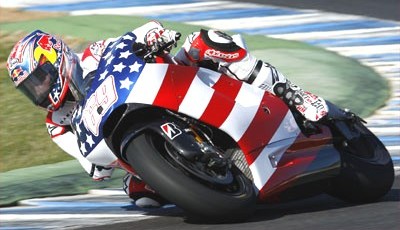
Nicky Hayden after riding the Ducati MotoGP bike for the first time:
"Like I told my brother, I don't know what they pay Casey but it's not enough. They need to double it, because this thing can be a monster."
"It was about what I expected. I didn't think it would be easy and I also didn't think it was going to be a disaster. I can see the potential of the bike; but it's also going to take a lot to get it out of it too. I knew that I wasn't just going to twist the throttle and go fast."
Maybe now certain whiny MotoGP fans will finally have to admit that Casey Stoner is a great rider.
|
|
 206 652-6300
206 652-6300
The Seattle Times - Cell Phone Spammer Prolificus Obnoxious
Posted August 8, 2008 by Mike
You're a hard-core left wing extremist newspaper that's losing both subscribers and advertisers at a steady rate, so what do you do? Why, what any good left-wing extremist nut job organization would do. You
intrude on the personal lives
of
every
single
person
you possibly can, without their permission of course, and in a way that's guaranteed to piss them off. You annoy the living crap out of customers and non-customers alike by calling them on their personal cell phones, hanging up on them, not leaving messages, and not leaving a caller ID.
I just got a brand new cell-phone, and in less than two weeks, I started getting calls from the above number. Not knowing who it was, I didn't return the call, but I did Google the number, and it came up as a telemarketer number for the Seattle Times. Since I hadn't given the number to anyone except direct family members, none of whom work for the Seattle Times, there's only two ways they could have gotten the number - by buying it from Tracfone (the cell-phone company), or by the highly illegal means of skimming it off a tower. Either way, it's sleaze at it's lowest, and guaranteed to speed the demise of the Seattle Times, which can't happen soon enough for me, and couldn't happen to a more deserving provider of bird-cage liner.
 In the mean time, however, I needed to have a way to identify who was calling from that number so I didn't try to call it back. A commenter at one of the blogs linked above suggested naming the number 'SPAM'.
In the mean time, however, I needed to have a way to identify who was calling from that number so I didn't try to call it back. A commenter at one of the blogs linked above suggested naming the number 'SPAM'.
I have done so.
Go thou and do likewise.
(The 'Z' preceding the word 'SPAM' guarantees that the number will be at the END of my phonebook list, not somewhere in the middle where it would be in the way.)
|
|
2007 Husqvarna STR 650 CRC Supermoto!
. . . Just STUNNING! And Street-Legal!
Posted November 21, 2006 by Mike
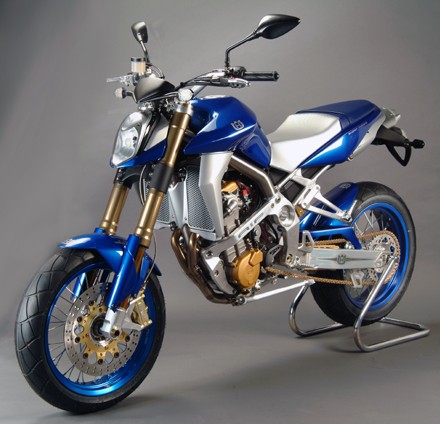
Husqvarna have just released pictures of probably the best-looking Streetified Supermoto from any manufacturer. Here's a couple more pics:
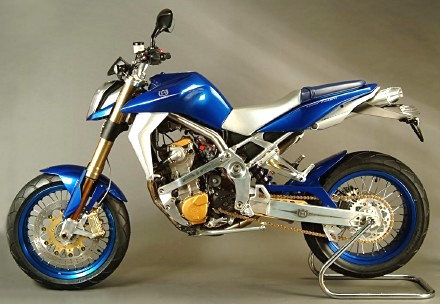
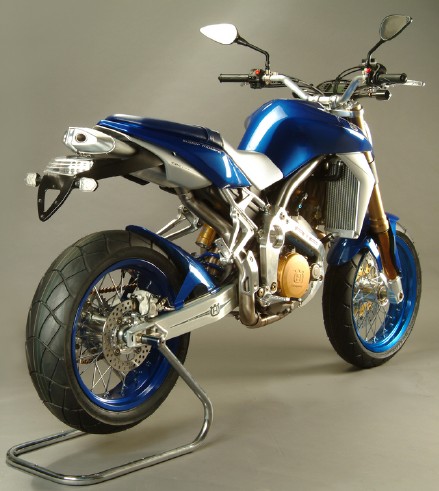
At 291 pounds, this has got to be one of the slickest 650 street bikes ever made.
I want one.
|
|
HUSQVARNA 2006 SUPERMOTOS ALL 50-STATE STREET-LEGAL!
. . . except for the totally tricked-out 450RR race-bike . . .
Posted November 13, 2006 by Mike
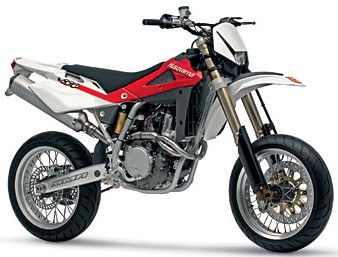 Aprilia have now been officially aced by no less than three of their European Supermoto competitors in getting their Supermoto bikes 50-state street-legal.
Aprilia have now been officially aced by no less than three of their European Supermoto competitors in getting their Supermoto bikes 50-state street-legal.
First out of the blocks was
Husaberg with their 2007 model FS550e. Husaberg were followed shortly by
KTM with their 2007 models EXC 450 and 525. Now
Husqvarna have one-upped both Husaberg and KTM, and beaten Aprilia to the punch at the same time by making their entire line of Supermoto bikes 50-state street-legal. Husky gives you a choice between 450, 510, and 610cc big singles to put license plates on. The coolest part? With the exception of the 313 pound 610, these are sub-300 pound street bikes! The Husky SMR 450 weighs in at a featherweight 240 pounds dry, which is nearly 85 pounds lighter than it's nearest Japanese big street single competitor, and a whopping 98 pounds lighter than the heaviest of the Big Three.
Here's a short numerical comparison - the Street-legal Supermotos are listed first, followed by the Big Three 650cc dual-purpose big singles, and the Suzuki DR-Z400SM Supermoto styled single. Aprilia's not-yet-street-legal 450 and 550 Supermotos are listed at the bottom for comparison, and just for kicks, I've added the specs for my current ride, a 1989 Honda NT650 HawkGT:
Manufacturer
|
Weight
dry, in
lbs.
|
H.P.
|
Seat Height
(in)
|
Tank Size
(gal)
|
|
Husky SMR 450
|
240
|
54?
|
36.02
|
2.43
|
Husky SMR 510
|
241
|
n/a
|
36.02
|
2.43
|
Husky SMR 610
|
313
|
53
|
n/a
|
3.17
|
KTM 450
|
250.3
|
48.5
|
36.42 |
2.11
|
KTM 525
|
250.8
|
n/a
|
36.42
|
2.11
|
Husaberg FS550e
|
247
|
n/a
|
34.3
|
2.8
|
|
Honda XR650L
(dual purp.)
|
324
|
n/a
|
37
|
2.8
|
Kawasaki KLR650
(dual purp.)
|
337
|
n/a
|
35
|
6.1
|
Suzuki DR650SE
(dual purp.)
|
324
|
n/a
|
33-34.8
|
3.4
(3.2 Cal.)
|
|
Suzuki DRZ 400SM
|
295
|
n/a
|
35
|
2.64
|
|
NOT YET
STREET-LEGAL
|
|
|
|
|
|
Aprilia SXV 450
|
271
|
~53
|
36
|
2.06
|
|
Aprilia SXV 550
|
271
|
~62
|
36
|
2.06
|
|
My Current Ride
|
Honda NT650 Hawk GT street bike
|
370???
OK.
|
58
|
30.6
|
3.18
|
Add gas and oil to the Supermoto bikes, and you've got high performance street bikes that could weigh as little as 260 to 270 pounds. These are the kind of numbers I want to see for my next street bike.
If you want more civility, you can always go with one of the Big Three 650cc dual-sports, but there will be a weight penalty - with gas and oil, they'll weigh in at 350 to 385 pounds, (very) roughly 100 pounds more than the average Supermoto-turned-streetbike.
Now, I'd much prefer the smoothness of the little Aprilia 450/550 V-twin Supermotos, but it doesn't look like they'll be street-legal next year. Not to worry - we now have a choice of three different makes and a minimum of six different bikes to choose from in the street-legal Supermoto category, and that doesn't include Suzuki's great little DR-Z400SM Supermoto. Add in the big 650 dual-sports from Honda, Kawasaki, and Suzuki (after, of course, trading the enduro wheels for Supermoto spec items), and you're up to seven makes and ten different bikes - something for everyone!
Life is good.
|
|
Invisibility Cloaks, Cloaked Klingon Cruisers, and The Final Frontier
 . . . in their next iteration, they also might make speed trap radar guns obsolete . . . weeee!
. . . in their next iteration, they also might make speed trap radar guns obsolete . . . weeee!
Posted Oct 25, 2006 by Mike
Back in 2003, The
TACHI Laboratory at The University of Tokyo
Graduate School of Information Science and Technology came up with a first generation version of
optical camouflage.
 Here’s how it worked. The object you wished to camouflage was coated with a retroreflector (reflective material). An image of the scene behind the object was taken from the observer’s viewpoint and projected onto the retroreflector-covered object. The affect allowed the observer to “see through” the object being camouflaged. The startling images above and on the right showed the results of the camouflage, which instantly brought the idea of an invisibility cloak to mind. While not yet truly capable of rendering an object invisible, it’s still pretty cool.
Scientists have now
taken the next step,
and this one is a doozy (Hat tip to my brother for the link to this article
"Cloak of Invisibility: Fact or Fiction?").
Here’s how it worked. The object you wished to camouflage was coated with a retroreflector (reflective material). An image of the scene behind the object was taken from the observer’s viewpoint and projected onto the retroreflector-covered object. The affect allowed the observer to “see through” the object being camouflaged. The startling images above and on the right showed the results of the camouflage, which instantly brought the idea of an invisibility cloak to mind. While not yet truly capable of rendering an object invisible, it’s still pretty cool.
Scientists have now
taken the next step,
and this one is a doozy (Hat tip to my brother for the link to this article
"Cloak of Invisibility: Fact or Fiction?").
A team of British and American scientists have worked out a method to bend microwaves around a small copper cylinder, effectively hiding the cylinder from the microwaves. Ordinarily, microwaves, like radar waves, would bounce back off the object, disclosing it's location.
Metamaterial Electromagnetic Cloak at Microwave Frequencies
D. Schurig1, J. J. Mock1, B. J. Justice1, S. A. Cummer1, J. B. Pendry2, A. F. Starr3, D. R. Smith1*
1 Department of Electrical and Computer Engineering, Duke University, Box 90291, Durham, NC 27708, USA.
2 Department of Physics, The Blacket Laboratory, Imperial College, London SW7 2AZ, UK.
3 SensorMetrix, San Diego, CA, USA.
Recently published theory has suggested that a cloak of invisibility is in principle possible, at least over a narrow frequency band. We present here the first practical realization of such a cloak: in our demonstration, a copper cylinder is 'hidden' inside a cloak constructed according to the previous theoretical prescription. The cloak is constructed using artificially structured metamaterials, designed for operation over a band of microwave frequencies. The cloak decreases scattering from the hidden object whilst at the same time reducing its shadow, so that the cloak and object combined begin to resemble free space.
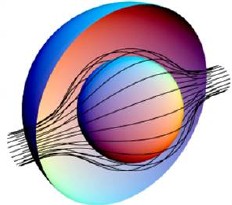 The first cloak only works with microwaves in two dimensions and it still reflects a little light and casts a small shadow. The effect is that the background is visible, but it is slightly darker in color due to the shadow and reflectivity.
The first cloak only works with microwaves in two dimensions and it still reflects a little light and casts a small shadow. The effect is that the background is visible, but it is slightly darker in color due to the shadow and reflectivity.
It is believed the concept can be extrapolated to working with visible light in three dimensions, so that it would not reflect light or cast a shadow. In the picture above, the dark lines represent the path that light would take around a cloaked sphere, rendering it invisible because the light was not reflected back to the viewer.
If this can be made to work with microwaves and visible light, I have a
 REALLY.
REALLY.
 BIG.
BIG.
 QUESTION.
QUESTION.
Can we do the same with GRAVITY WAVES?
In the past, many anti-gravity device concepts relied on the idea of repelling gravity. The usual suspect in this scheme was some method of using a singularity (small black hole) contained within a magnetic field.
Never mind the difficulties of finding (making?), containing, and directing the energies of miniature black holes. Consider the consequences of one of those little monsters escaping it's containment field. I shudder to think of a failure in a system of this type. The magnitude of the disaster would compare favorably to any of those attributed (wrongly of course) to the WWWA’s Lovely Angels (Dirty Pair).
If we could just bend gravity waves instead of trying to repel them, cheap access to space and the long-awaited, much maligned air-car concept could become reality.
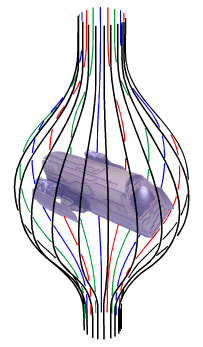 Imagine the object in the center of the field were a spaceship or an air-car - gravity waves would simply have no affect, and propulsion would become a simple matter of current engine/motor technology, be it air-breathing or space-capable.
Imagine the object in the center of the field were a spaceship or an air-car - gravity waves would simply have no affect, and propulsion would become a simple matter of current engine/motor technology, be it air-breathing or space-capable.
And our new gravity-bending ship will work just as well on Mars as it does on Earth. Or any other planet in our solar system. Or any other solar system, for that matter.
Suddenly, real space exploration becomes not only possible, but relatively cheap. The gravity well ceases to be our prison, and exploration of other planets no longer requires carrying the massive loads of propellant necessary to descend to and escape from another planet’s gravity well. Descending to, and leaving a planet would require only minimal propulsion, and the main purpose of propulsion becomes interplanetary travel. Hello, Ion engines.
And since gravity is no longer an issue, spacecraft size becomes a lot less important. Spacecraft size is currently limited by the energy required to escape from the gravity well. Remove that limitation, and truly large spaceships become possible, limited only by the strength requirements of a pressurized atmosphere.
In addition, if the gravity-bender can be controlled, might it be possible to direct gravity waves back in the direction they came from, so as to use them to slow down when approaching a planet?
One would first go past the planet. Once past, bend the waves back at the planet, effectively doubling the gravitational pull in the direction of the planet. Then gradually dial the “bending” effect down, so as to control the approach. When a proper approach vector and position has been achieved, one could revert to “anti-gravity” bending again.
This could happen in my lifetime. And getting to space would no longer require high-G force rocket launches, so even old people could go into space (although the loss of bone calcium would make it un-wise for extended periods).
Woo-hoo!
|
|
Quote of the Day
. . . from the Estoril MotoGP
Posted October 16, 2006 by Mike
From SuperbikePlanet, Kenny Roberts Jr., after being passed for the lead in turn 1 by eventual Estoril Moto GP winner Tony Elias:
"I might have taken a better defensive line in Turn 1 if I'd realized," said Kenny "although I'm not sure how you defend against a red Honda coming at you sideways."
|
|

|
Today's PJs
I am currently wearing:

"... you couldn't have a starker contrast between the multiple layers of checks and balances, and a guy sitting in his living room in his pajamas writing what he thinks".
Jonathan Klein, Former CBS News Executive, on bloggers.
ARCHIVES
Oldies but Goodies
The Blogroll
TIM BLAIR
Down-under Conservative
Cold Fury
Political Commentary
Frank W. James
Farmer Frank on Corn, Beans, spent Brass, an empty page, and a deadline
The Instapundit
Godfather of the blogosphere
view from the porch
Tam on Bikes, Books, & Boomsticks, with professional-grade snark thrown in for good measure. And did I mention she's got cats?
The Dissident Frogman
Conservative political commentary from behind the EU lines, and home of one of the funniest videos on the net, The Dissident Frogman's
AFP Shooty-No Shooty Training Video
View it NOW!
Eject! Eject! Eject!
Political commentary backed by reason, plus
Essays on America - Go There -
READ THEM ALL! NOW!
IMAO

Satire, snark, and home of the famous
"Nuke The Moon" essay. You just know you want to read it.
. . . and once you've read the essay, you must buy the T-shirt:
NUKE The MOON T-shirts!
More of Frank J. from IMAO
at pajamas media:
Frank J. of IMAO
Mind of Mog
Cats and Commentary
Rachel Lucas
Mark Steyn
Political Commentary
Power Line
Dan Rather's nemesis!
Say Uncle
2nd Amendment watchdog
Motorcycles
WSBK.com
Cycle News On-line
Crash.net
MotoGP.com
Superbike Planet
FunStuff
Boomershoot
Longe Range Fun with a Bang!
Shooting Bench plans!
Make one for the Boomershoot!
Why lie on the cold wet ground, when you can sit at a table in comfort?!


Get Your Membership
Card
TODAY !
|




 Turn 1 - Willow
Turn 1 - Willow



























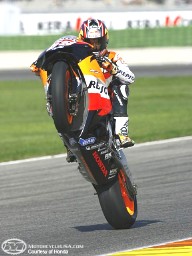

 . . . in their next iteration, they also might make speed trap radar guns obsolete . . . weeee!
. . . in their next iteration, they also might make speed trap radar guns obsolete . . . weeee! Here’s how it worked. The object you wished to camouflage was coated with a retroreflector (reflective material). An image of the scene behind the object was taken from the observer’s viewpoint and projected onto the retroreflector-covered object. The affect allowed the observer to “see through” the object being camouflaged. The startling images above and on the right showed the results of the camouflage, which instantly brought the idea of an invisibility cloak to mind. While not yet truly capable of rendering an object invisible, it’s still pretty cool.
Here’s how it worked. The object you wished to camouflage was coated with a retroreflector (reflective material). An image of the scene behind the object was taken from the observer’s viewpoint and projected onto the retroreflector-covered object. The affect allowed the observer to “see through” the object being camouflaged. The startling images above and on the right showed the results of the camouflage, which instantly brought the idea of an invisibility cloak to mind. While not yet truly capable of rendering an object invisible, it’s still pretty cool.
 The first cloak only works with microwaves in two dimensions and it still reflects a little light and casts a small shadow. The effect is that the background is visible, but it is slightly darker in color due to the shadow and reflectivity.
The first cloak only works with microwaves in two dimensions and it still reflects a little light and casts a small shadow. The effect is that the background is visible, but it is slightly darker in color due to the shadow and reflectivity. Imagine the object in the center of the field were a spaceship or an air-car - gravity waves would simply have no affect, and propulsion would become a simple matter of current engine/motor technology, be it air-breathing or space-capable.
Imagine the object in the center of the field were a spaceship or an air-car - gravity waves would simply have no affect, and propulsion would become a simple matter of current engine/motor technology, be it air-breathing or space-capable.


